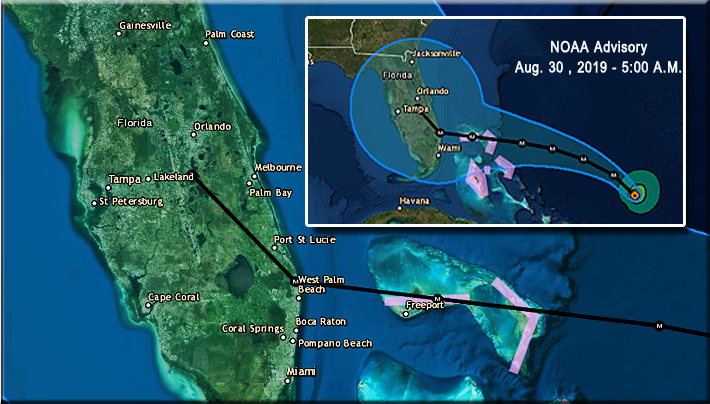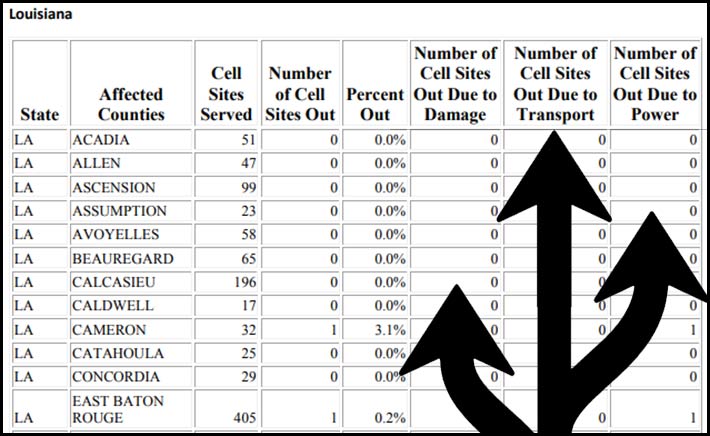
Hurricane Dorian’s gray area cone has changed considerably in the past two days
It’s still unknown where the potential landfall will be for Hurricane Dorian in Florida, a possible Category 4 major hurricane with wind speeds beginning at 130 mph.
For the past two days, projections have changed from it hitting Cape Canaveral to this morning’s 5:00 A.M. NOOA model showing West Palm Beach, approximately 125 miles south, as being in its crosshairs.
Early this morning, Dorian had maximum sustained winds of 105 mph and was moving northwest at 12 miles per hour. Florida Governor Ron DeSantis has declared a state of emergency in advance of Dorian.
The National Hurricane Center predicts that Dorian is expected to become a major hurricane late today, and remain an extremely dangerous hurricane through the weekend and into Labor Day.
Tower crews are prepared to assist in ensuring that that communications services are disrupted as little as possible and carriers are in their PR push assuring that they will provide backup services in the form of COLTs, COWs and other mobile cellular infrastructure.
Also, cell site generators are being topped off and crews are being marshalled outside of the state to assist in quick deployment of restoration personnel.
Dorian bypassed Puerto Rico, and the FCC’s August 29 status report indicated that only 12 cell sites were down due to power issues. The agency deactivated information reporting for the hurricane for Puerto Rico and the U.S. Virgin Islands following the report, but is expected to activate Florida reporting today or tomorrow as affected counties become identified.
However, because of the uncertainty of where landfall will be, additional counties will likely be listed. Currently, all 67 counties in Florida are under an emergency declaration.
The FCC, starting with Tropical Storm Barry in July, required new reporting requirements, requiring wireless providers to identify the number of cell sites out of service due to power, transport or damage.
Previously, the FCC only required the total number of sites that were not operating. The new reporting allows the industry to identify the true extend of wireless infrastructure problems.
In May, the FCC released its findings on the communication impacts of Hurricane Michael, setting the course for improvements and calling upon carriers to act.
Their investigation found that recovery efforts themselves often led to communications outages. There were numerous cases in which a wireless provider had restored service to customers only to have that service brought down as third-party crews damaged communications assets while clearing trash or restoring power lines and utility poles.
Wireless Estimator will provide continuous updates on Dorian.

Hurricane Dorian’s FCC reporting will include the number of cell sites out of service due to damage, transport and power, providing a more accurate overview of problems that need to be addressed. The new reporting began with tropical storm Barry in July.
















